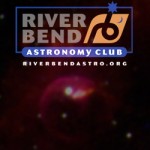
Oct 08
SIUE News -SIUE’s Gay Elected to Astronomical Society of the Pacific Board

Southern Illinois University Edwardsville’s Pamela L. Gay, an assistant research professor in the Center for STEM Research, Education and Outreach, has been elected to the Board of Directors of the Astronomical Society of the Pacific. She is one of three new members on the 12-person board.
Also elected to board with Gay are Gibor Basri, professor of astronomy at the University of California Berkeley, and Dr. Philip Sadler, F.W. Wright senior lecturer in the department of astronomy and director of the Science Education Department at the Harvard-Smithsonian Center for Astrophysics.
“We live in a time of great change, where astronomy and space exploration are driving forces behind innovations in computational, aeronautical, and imaging technologies,” said Gay, who achieved a doctorate in astronomy from the University of Texas. “The space and astronomy communities will require STEM educated employees to thrive.
“The Astronomical Society of the Pacific, with its international reach and its numerous global partnerships, is positioned to enact and support the educational and research activities that are needed. I will bring to the ASP board my passion for public engagement in science and my experience working with the global astronomy education community. By working together, and acting globally while thinking cosmically, we can use astronomy and space science to develop our world.”
Gay has served as an astronomer, writer and podcaster and has most recently focused on using new media to engage people in learning astronomy. She is the director of CosmoQuest.org, a virtual research facility based in the SIUE STEM Center. CosmoQuest provides public access to opportunities normally only available to professional researchers.
Gay co-hosts Astronomy Cast with Fraser Cain, publisher of Universe Today. She also works to communicate astronomy to the public through her blog StarStryder.com, through frequent public appearances and popular articles. Her writing has appeared in Astronomy, Sky and Telescope, and Lightspeed magazines. She has also appeared on the History Channel’s “The Universe” and the National Geographic Channel’s “Top Secrets.”

